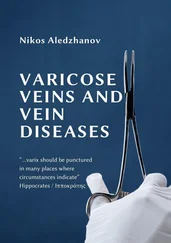As discouraging as the emergence of MDR-GNBs and the failure to control disease epidemics due to scarce resources might be, much has been accomplished in the past decade in improving the lives of those afflicted with or at risk for infectious disease. Two advances clearly stand out. First, the demonstration that the spread of HIV could be greatly reduced by pre-exposure prophylaxis gives hope that this epidemic that has caused so much suffering can be blunted. Second, new biologics including vaccines and monoclonal antibody preparations are playing an important role in not only infectious diseases but other diseases where there is a malfunctioning of the immune system.
Two vaccines of particular note have been the conjugate 7-valent, now 13-valent, Streptococcus pneumoniae vaccine and a malaria vaccine. The conjugate pneumococcal vaccine has been shown to reduce disseminated disease not only in its target group, young children, but also in the entire population—a clear example of herd immunity. A prototype malaria vaccine has shown success in phase 3 clinical trials and has great promise for reducing malaria disease burden especially among young children, the vaccine’s targeted population.
New monoclonal antibodies show tremendous promise for the treatment of a variety of diseases due to immune dysregulation while at the same time placing individuals at peril for unintended consequences of this therapy. As a result, care providers are faced with “black box” warnings which advise of potentially fatal infectious disease complications of these promising therapies.
The 4th edition of this text provides cases that will illustrate many of these issues. The goal of this edition continues to be to challenge students to develop a working knowledge of the variety of microorganisms that cause infections in humans. This working knowledge is rapidly expanding due to the rapid and increased deployment of NAAT and sequence analysis for detection and identification of microorganisms. As a result, many of the cases have a significant molecular diagnostic component. The “Primer on the Laboratory Diagnosis of Infectious Diseases” has been updated and expanded to reflect the increasing importance of molecular-based assays.
The basic format of this edition is consistent with that of the previous three editions. The cases are presented as “unknowns” and represent actual case presentations of patients we have encountered during our professional duties at two university teaching hospitals. Each case is accompanied by several questions to test knowledge in four broad areas:
The organism’s characteristics and laboratory diagnosis
Pathogenesis and clinical characteristics of the infection
Epidemiology
Prevention, and in some cases, drug resistance and treatment
This edition features a new section titled “Advanced Cases,” which replaces the section titled “Emerging and Re-Emerging Infectious Diseases.” The types of cases that are seen by our infectious disease consult services and discussed in our weekly infectious disease case management conferences will be found here. These include newly recognized disease agents as well as highly complex cases where the interaction of the immune system and human pathogens can be more closely examined. The Advanced Cases section has all new cases.
This edition contains 74 cases, of which 42 are new. The new cases explore many of the issues described above in this introduction. The 32 cases that have been retained have been updated to reflect the current state of the art as it relates to the organism causing the infection.
The most significant change in the 4th edition is that we bid adieu to one of the authors of the first three editions, Dr. Lynn Smiley, and welcome a new author, Dr. Melissa Miller. This work was Dr. Smiley’s idea, an idea that she helped bring to fruition through three editions. She now passes the mantle to Dr. Miller. Dr. Miller, Director of the Molecular Microbiology Laboratory at UNC Health Care, brings a wealth of knowledge on the molecular aspects of infectious diseases, especially in the fields of virology and antimicrobial resistance. This expertise is essential to produce a contemporary text in medical microbiology and infectious disease. We welcome her!
This text was written for you. It is an attempt to help you better understand the clinical importance of the basic science concepts you learn either in your medical microbiology or infectious disease course or through your independent study. You may also find that this text is useful in reviewing for Part I of the National Board of Medical Examiners exam. It should be a good reference during your Infectious Disease rotations.
Below is a sample case, followed by a discussion of how you should approach a case to determine its likely etiology.
A 6-year-old child presented with a 24-hour history of fever, vomiting, and complaining of a sore throat. On physical examination, she had a temperature of 38.5°C, her tonsillar region appeared inflamed and was covered by an exudate, and she had several enlarged cervical lymph nodes. A throat culture plated on sheep blood agar grew many beta-hemolytic colonies. These colonies were small with a comparatively wide zone of hemolysis.
What is the likely etiologic agent of her infection?
The first thing that should be done is to determine what type of infection this child has. She tells you that she has a sore throat, “my throat hurts.” On physical examination, she has sign of an inflamed pharynx with exudate, which is consistent with her symptoms. (Do you know what an exudate is? If not, it’s time to consult the glossary in the back of this text.) She also has enlarged regional lymph nodes, which support your diagnosis of pharyngitis (sore throat).
What is the etiology of her infection? The obvious response is that she has a “strep throat,” but in reality there are many agents which can cause a clinical syndrome indistinguishable from that produced by group A streptococci, the etiologic agent of “strep throat.” For example, sore throats are much more frequently caused by viruses than streptococci. Other bacteria can cause pharyngitis as well, including Mycoplasma spp., various Corynebacterium spp., Arcanobacterium sp., and Neisseria gonorrhoeae. All of these organisms would be in the differential diagnosis, along with other perhaps more obscure causes of pharyngitis.
However, further laboratory information narrows the differential diagnosis considerably; small colonies that are surrounded by large zones of hemolysis are consistent with beta-hemolytic streptococci, specifically group A streptococci. On the basis of presenting signs and symptoms and the laboratory data, this child most likely has group A streptococcal pharyngitis.
Specific aids have been added to the book to assist you in solving the cases.
1 The book begins with “A Primer on the Laboratory Diagnosis of Infectious Diseases.” The purpose of this section is to explain the application and effectiveness of different diagnostic approaches used in the clinical microbiology laboratory. We recommend that you read this primer before beginning your study of the cases.
2 At the beginning of each book section is a brief introduction and a list of organisms. Only organisms on this list should be considered when solving the cases in that section. These lists have been organized on the basis of important characteristics of the organisms.
3 A table of normal values is available inside the front cover of this book. If you are unsure whether a specific laboratory or vital sign finding is abnormal, consult this table.
4 A glossary of medical terms which are frequently used in the cases is available at the end of the text. If you do not understand a specific medical term, consult the glossary. If the term is not there, you will have to consult a medical dictionary or other medical texts.
Читать дальше












